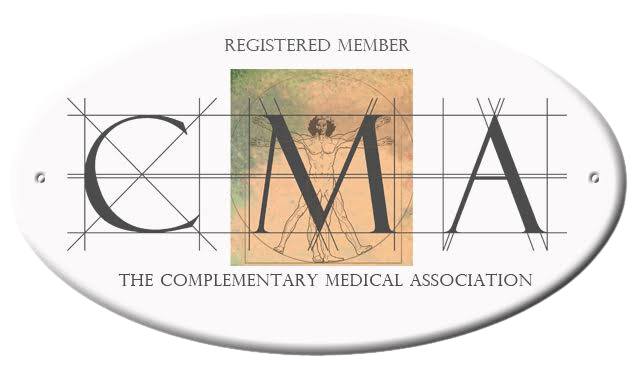
Trauma can have a profound impact on an individual’s mental and emotional health, leading to issues such as anxiety, depression, and post-traumatic stress disorder (PTSD). Trauma release techniques offer powerful tools for processing and healing from traumatic experiences. This article explores several effective techniques that individuals can try to promote emotional well-being and recovery.
Introduction
Trauma release techniques are designed to help individuals process and release the emotional and physical effects of trauma. By engaging in these practices, individuals can improve their mental health, increase emotional resilience, and achieve a greater sense of well-being. These techniques can be practiced independently or with the guidance of a therapist, making them accessible to a wide range of individuals.
Understanding Trauma and Its Effects
What is Trauma?
Trauma is the emotional and psychological response to a distressing or life-threatening event. It can result from a single incident, such as an accident or natural disaster, or from ongoing experiences, such as abuse or neglect. Trauma can affect the way individuals think, feel, and behave, leading to a range of symptoms and difficulties.
The Impact of Trauma on Mental Health
Unresolved trauma can manifest as anxiety, depression, hypervigilance, emotional numbing, and relationship difficulties. It can also affect physical health, contributing to symptoms such as chronic pain, fatigue, and insomnia. Trauma release techniques aim to address these issues by facilitating the processing and release of traumatic memories and emotions.
Effective Trauma Release Techniques
Somatic Experiencing
Purpose: Release trauma stored in the body by increasing awareness of physical sensations.
How it Works: Somatic experiencing involves paying attention to bodily sensations and using movement or touch to release tension. This technique helps individuals process and integrate traumatic experiences, leading to greater emotional balance and resilience .
Benefits: Somatic experiencing can reduce trauma-related symptoms, improve emotional regulation, and promote a sense of safety and grounding.
Breathwork
Purpose: Regulate the nervous system and promote emotional healing.
How it Works: Breathwork techniques, such as Holotropic Breathwork and Sudarshan Kriya Yoga (SKY Breath Meditation), involve controlled breathing exercises that facilitate the release of trauma and improve emotional well-being.
Benefits: Breathwork can reduce anxiety and PTSD symptoms, increase emotional resilience, and enhance self-awareness .
Eye Movement Desensitisation and Reprocessing (EMDR)
Purpose: Process and reframe traumatic memories.
How it Works: EMDR uses bilateral stimulation, such as eye movements or tapping, to help individuals process and integrate traumatic memories. This technique reduces the intensity of trauma-related emotions and facilitates healing.
Benefits: EMDR can decrease symptoms of PTSD and anxiety, improve emotional regulation, and increase self-awareness
Tension & Trauma Release Exercises (TRE)
Purpose: Release tension and stress stored in the body.
How it Works: TRE involves a series of exercises designed to activate the body’s natural tremor mechanism, releasing tension and stress stored in the muscles
Benefits: TRE can reduce symptoms of stress and anxiety, improve physical and emotional well-being, and promote relaxation and balance
Mindfulness and Meditation
Purpose: Increase present-moment awareness and promote emotional balance.
How it Works: Mindfulness and meditation practices involve focusing on the present moment, observing thoughts and emotions without judgment, and cultivating a sense of calm and acceptance
Benefits: Mindfulness and meditation can reduce symptoms of anxiety and depression, increase emotional resilience, and enhance self-awareness
Practical Tips for Practicing Trauma Release Techniques
Create a Safe and Supportive Environment
Ensure that you have a quiet, comfortable space where you can focus on your practice without distractions. Surround yourself with supportive individuals who can provide encouragement and understanding.
Start Slowly and Progress Gradually
Begin with simple techniques and gradually increase the intensity and duration of your practice as you become more comfortable. Listen to your body and adjust your practice based on your needs and preferences.
Seek Guidance from a Therapist or Practitioner
Consider working with a therapist or practitioner who specializes in trauma release techniques. They can provide guidance, support, and feedback to help you navigate the process effectively.
Incorporate Techniques into Your Daily Routine
Regular practice is key to achieving lasting results. Incorporate trauma release techniques into your daily routine, whether it’s through dedicated practice sessions or by integrating techniques into your daily activities.
FAQs
What are trauma release techniques, and how do they work?
Trauma release techniques are practices designed to help individuals process and release the emotional and physical effects of trauma. They work by facilitating the processing and integration of traumatic memories and emotions, promoting healing and recovery.
Can trauma release techniques help with anxiety and PTSD?
Yes, trauma release techniques have been shown to be effective in reducing symptoms of anxiety and PTSD. Practices such as somatic experiencing, breathwork, and EMDR can help individuals process traumatic memories, regulate their emotions, and achieve greater emotional balance.
How long does it take to see results from trauma release techniques?
The duration of trauma release techniques varies depending on individual needs and goals. Some individuals may experience significant changes in a few sessions, while others may benefit from longer-term practice to achieve their desired outcomes.
What qualifications should I look for in a trauma release therapist or practitioner?
When seeking a trauma release therapist or practitioner, it’s important to look for qualifications such as relevant training, certifications, and experience in trauma-focused therapies. Additionally, consider finding a practitioner whose approach and values align with your needs and goals.
Are trauma release techniques suitable for everyone?
Trauma release techniques are suitable for individuals open to self-exploration and willing to engage in the healing process. They are beneficial for those seeking recovery from trauma, improved mental health, and greater emotional well-being.
Can trauma release techniques improve relationships?
Yes, trauma release techniques can enhance relationship skills by improving communication, empathy, and trust. These skills foster deeper connections and more meaningful interactions, strengthening relationships.
Conclusion
Trauma release techniques offer powerful tools for healing and improving mental health. By engaging in practices such as somatic experiencing, breathwork, and EMDR, individuals can process and release the effects of trauma, leading to greater emotional resilience and well-being. Whether practiced independently or with professional guidance, trauma release techniques provide a pathway to lasting healing and recovery.







